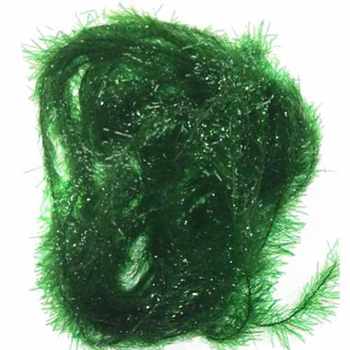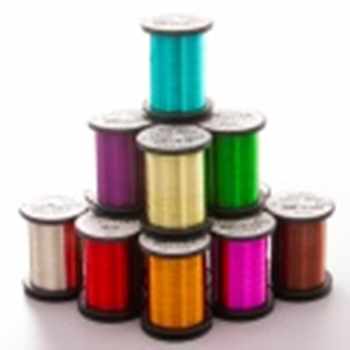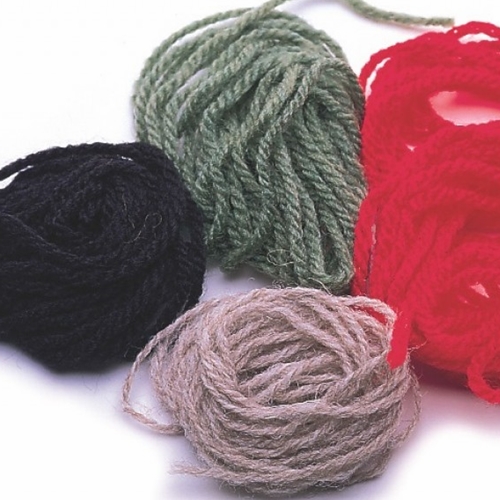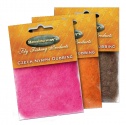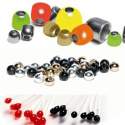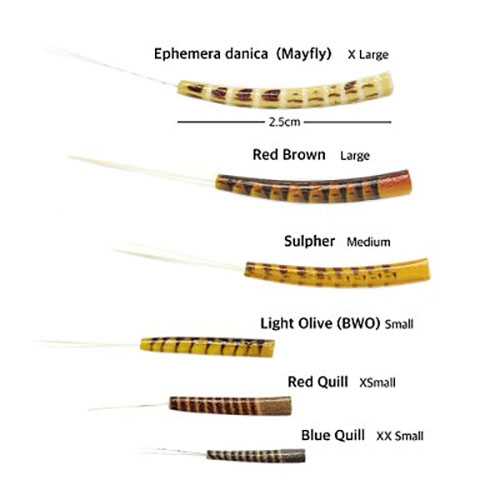Introduction To Fly Tying Materials
There are many specialist fly tying tools that are used for fly tying however there is an enormous range of materials in different colors and types, both natural and synthetic used for fly tying. What are the materials used for fly tying?
- Natural materials ranging from
- feathers
- furs
- cottons and silk thread
- wools
- threads
- plus an enormous range of evolving synthetic materials including
- mylar
- nylon
- polypropylene and
- antron
Modern fly tyers are becoming far more sympathetic to nature as we see species becoming protected like Jungle Cock and even Peacock protected by CITES. This is good for the sport, the Victorians used many exotic species from Condor to Parrots to tie their flies, silk was the primary tying thread still imitated . Today we use many natural and modern synthetic materials for fly tying.
Natural Materials Used In Fly Tying
Cottons, Silk and Modern Synthetic Fly Tying Threads
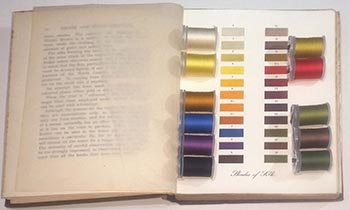 Essential to tie any fly threads secure the fly tying materials to the hook. Fly Tying Thread come in a massive range of sizes from 18/0 to 3/0 or 30 denier to 200 denier using more modern sizing. Black is a very popular colour along with Olive but their is a vast range of colours available of threads.
Essential to tie any fly threads secure the fly tying materials to the hook. Fly Tying Thread come in a massive range of sizes from 18/0 to 3/0 or 30 denier to 200 denier using more modern sizing. Black is a very popular colour along with Olive but their is a vast range of colours available of threads.
Feathers, Capes & Wing Quills
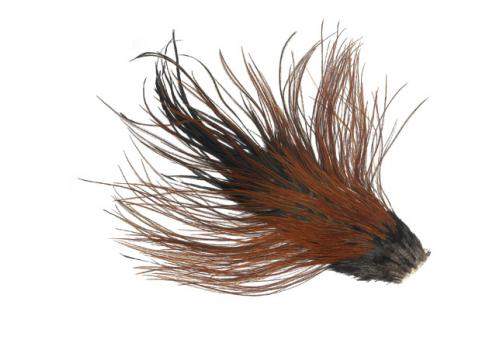 Feathers ranging from cdc feathers as a buoyant material which are an incredible material to biots from wing quills are used with feathers for wings, as legs on spiders. Capes provide feathers for hundreds or even thousands of flies depending on the cape grade.
Feathers ranging from cdc feathers as a buoyant material which are an incredible material to biots from wing quills are used with feathers for wings, as legs on spiders. Capes provide feathers for hundreds or even thousands of flies depending on the cape grade.
Today feathers are used from birds such as Duck, Turkey, Partridge, Pheasant, Peacock, Jungle Cock, Starling, Magpie, Snipe, and most importantly Chickens, however these are specially bred for their plumage for use in fly tying by companies. Many birds from natural bred birds to birds hunted as a game species like Partridge and pheasant are usedFind out more on our Introduction to Feathers blog post
Fly Tying Furs
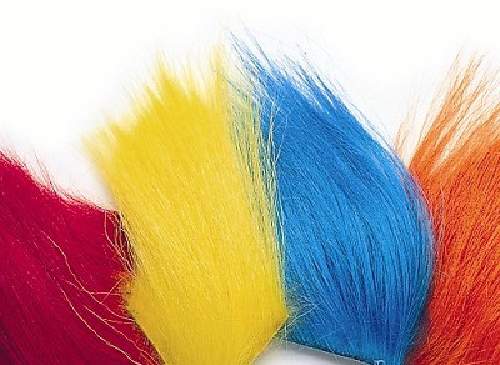 Furs have been used for a long time from basic furs like Hare used in the GRHE (Gold Ribbed Hares Ear), Rabbit, Squirrel to Seals Fur a long used staple in fly tying dubbing and exotics like Cashmere and Arctix Fox and even Polar Bear. The modern fly tyer is becoming more aware of the environment and legal restrictions means many exotics and rare furs are not used in fly tying except in certain countries like Polar Bear in Canada where they are legally shot if invading towns. However with so many wonderful furs available and plentiful the fly tyers today uses more common furs for zonker strips (long thin strips used for winging) or as dubbing as in the Gold Ribbed Hares Ear.
Furs have been used for a long time from basic furs like Hare used in the GRHE (Gold Ribbed Hares Ear), Rabbit, Squirrel to Seals Fur a long used staple in fly tying dubbing and exotics like Cashmere and Arctix Fox and even Polar Bear. The modern fly tyer is becoming more aware of the environment and legal restrictions means many exotics and rare furs are not used in fly tying except in certain countries like Polar Bear in Canada where they are legally shot if invading towns. However with so many wonderful furs available and plentiful the fly tyers today uses more common furs for zonker strips (long thin strips used for winging) or as dubbing as in the Gold Ribbed Hares Ear.
Check more details in our Introduction To Fly Tying Furs Blog Post
Fly Tying Wools
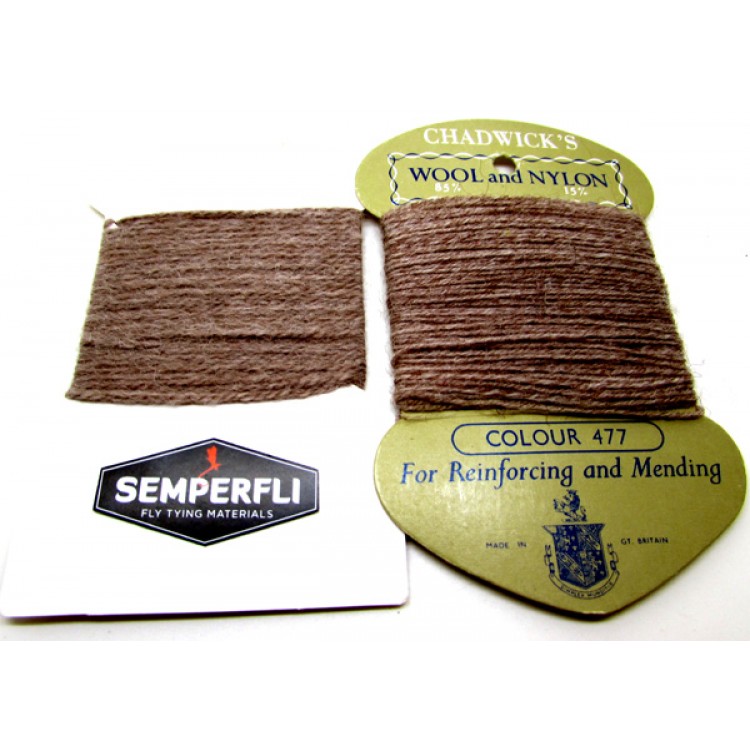 Wool has been in use for centuries in Fly Tying with the earliest reference iro 200AD in Ælian’s Natural History when wrote about the Macedonian way of catching fish, "They fasten red (crimson red) wool around a hook, and fix onto the wool two feathers which grow under a cock’s wattles, and which in colour are like wax". The Macedonians wer catching a fish which he said "These fish feed upon a fly peculiar to the country, which hovers on the river. It is not like the flies found elsewhere, nor does it resemble a wasp in appearance, nor in shape would one justly describe it as a midge or a bee, yet it has something of each of these. In boldness it is like a fly, in size you might call it a midge, it imitates the colour of a wasp, and it hums like a bee. The natives generally call it the Hippouros".
Wool has been in use for centuries in Fly Tying with the earliest reference iro 200AD in Ælian’s Natural History when wrote about the Macedonian way of catching fish, "They fasten red (crimson red) wool around a hook, and fix onto the wool two feathers which grow under a cock’s wattles, and which in colour are like wax". The Macedonians wer catching a fish which he said "These fish feed upon a fly peculiar to the country, which hovers on the river. It is not like the flies found elsewhere, nor does it resemble a wasp in appearance, nor in shape would one justly describe it as a midge or a bee, yet it has something of each of these. In boldness it is like a fly, in size you might call it a midge, it imitates the colour of a wasp, and it hums like a bee. The natives generally call it the Hippouros".
Wools in some cases have reached a cult status, indeed if you see an original card of Chadwicks 477 wool on eBay or similar you will see it achieve silly prices for what was a darning wool used for mending socks.
See more in out Introduction To Fly Tying Wools Blog Post
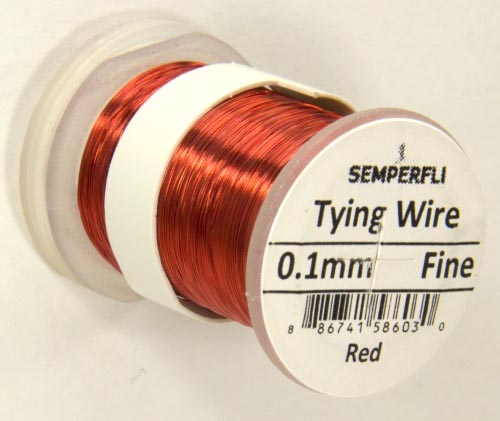 Fly Tying Wires
Fly Tying Wires
Wires have have 3 primary uses in fly tying as:
- bodies in flies like the Copper John
- to add weight to a fly to help it sink or
- as ribbing on both dry flies and lures, nymphs and streamers.
Wires come in different guages or sizes 0.1mm, 0.2mm and 0.3mm the most common in fly tying and in a range of colours.
Find our more on our post Introduction to fly tying wires.
Beads & Eyes
Synthetic Materials Used In Fly Tying
Polypropylene
Rayon and Nylon
Gel Spun Polyethylene
Antron
Mylar and Tinsels
Plastics





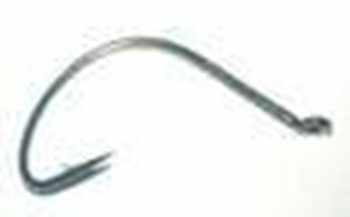
.jpg)



